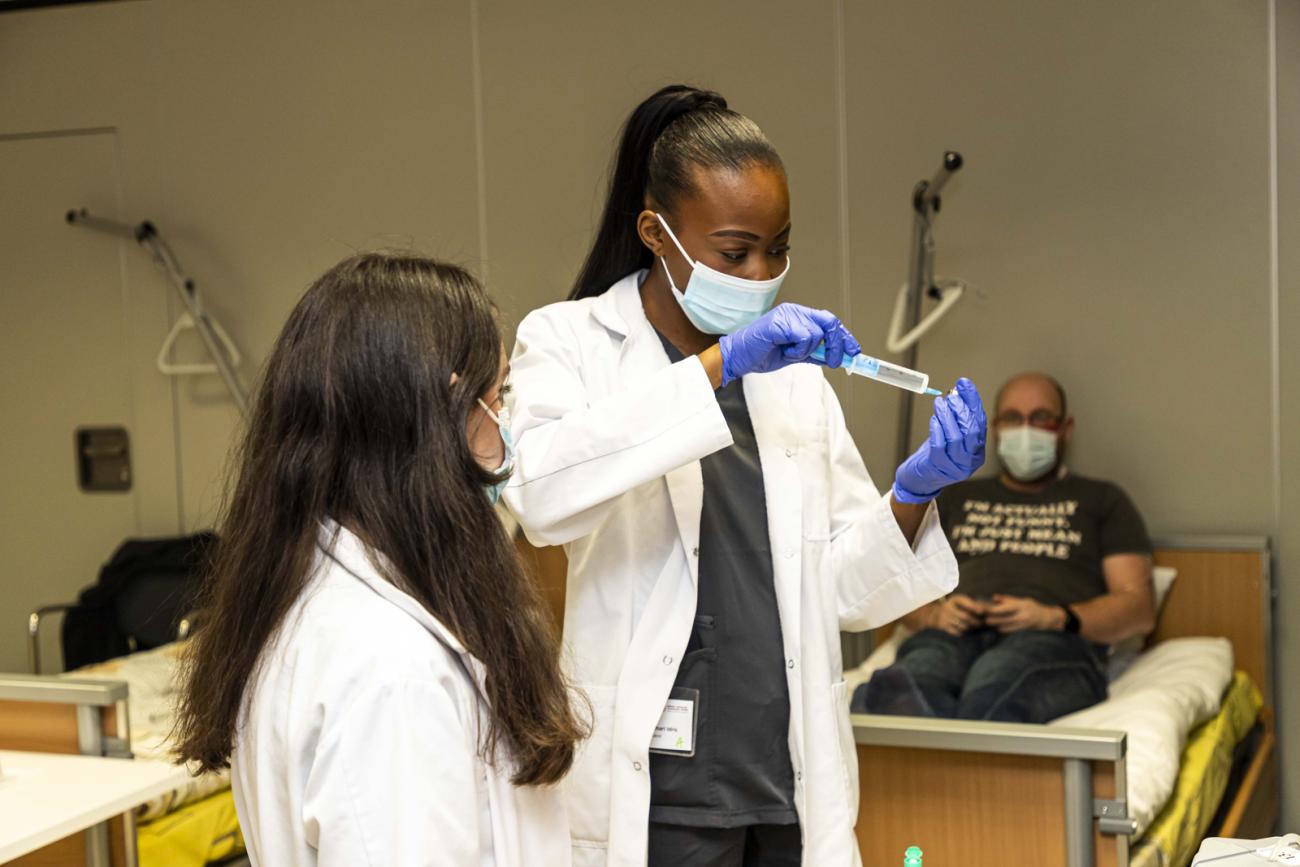Third Simulated Hospital for Prospective Doctors Set up at METC
Before starting to work with real patients in a real hospital, prospective doctors at Rīga Stradiņš University (RSU) in their third year of studies complete a nursing placement in a specially equipped simulated hospital. The hospital is equipped with models, mannequins, simulators, and actors playing patients. The two-week project involves working in the simulated department of internal diseases and then in the department of surgery. This is the third time the project is being carried out at the Medical Education Technology Centre (METC) and will end on Friday, 13 January. The idea originated when staff at METC witnessed the effect that restrictions imposed by the pandemic had on international students’ ability to undergo placements in their home countries. The project has, however proved its worth and is now a part of the study process.
The main objective of the simulated hospital is for the participants to develop clinical skills in a safe environment. As METC Director Ieva Šlēziņa points out, simulation-based education at the University is focused on patient safety and the quality of healthcare. Future doctors and nurses are trained in four consecutive stages: theoretical lectures, practical classes, a placement in a simulated hospital, and only then working with patients in a real environment. ‘Third-year students work in the simulated hospital. At this stage, they have learnt a lot of the theory as well as some clinical skills, such as administering intravenous drugs, using a defibrillator, or catheterising the bladder. However, they have not practised it as a whole, as it would be in real life. It is like making a salad, to compare it to something mundane. Before working in the simulated hospital, students have familiarised themselves with the recipe and have each tried cutting one ingredient on their own. Now they have to do the collaborative work,’ says Madara Blumberga. Blumberga is not only the Simulation-Based Learning Development Manager at the METC, but also a nurse at the Children’s Clinical University Hospital. She is used to explaining things simply.
The project helps students to improve not only their medical knowledge and skills, but also teamwork and communication in a hospital environment together with colleagues, patients, and even the simulated patients’ relatives. In this simulated working environment, the students have to deal with both calm and compliant patients as well as those who express frustration and anger or are difficult to persuade to undergo treatment. Each patient/actor is assigned a scenario with a specific diagnosis, character, and behaviour. The patients were recruited through social networks and friends. According to the METC team, some of them are already veterans having participated in previous simulated hospital projects and are willing to spend even their vacation days on this exciting and socially valuable experience.
In addition, students are required to document the medical and patient care processes. They have to fill in laboratory referrals, assess patients according to risk scales, and document accidents or if patients have been administered the wrong dosage. During the day, time is set aside for the students to discuss the experience with mentors and to analyse situations that might have been prevented or dealt with differently in the future. This helps to establish a safety culture for patients and medical professionals already during their studies.
The staff at the METC invest a lot of effort to ensure that the students can complete a nursing placement in the simulated hospital. Planning the scenarios, producing improvised medicines, artificial blood, urine, and even faeces, furnishing the simulated wards and settings, creating artificial wounds, and installing equipment requires the involvement of simulation instructors, clinical simulation specialists, and laboratory technicians as well as medical engineers and other specialists. ‘The hours are undeniably long, but this is the kind of project that gives immediate satisfaction. Students are required to learn to work in teams, to share, and to prioritise responsibilities. They need to be able to do several things at once. The scenarios also include emergency situations to prepare students for critical situations, for example, if a patient’s condition deteriorates rapidly. They need to be able to implement resuscitation measures in a ward setting at the same time as a palliative patient is dying in another ward the death and action needs to be taken there too. At the end of the project, the young students come up and thank us for the opportunity to train in a safe and supervised environment where they can make mistakes and learn without hurting anyone,’ says Šlēziņa.
Related news
 Time capsule laid at ceremony for construction of new RSU sports complexFor Students, Consolidation, For RSU Employees, Internal consolidation, Development
Time capsule laid at ceremony for construction of new RSU sports complexFor Students, Consolidation, For RSU Employees, Internal consolidation, Development








































